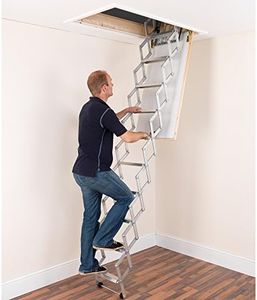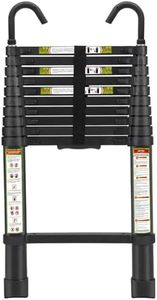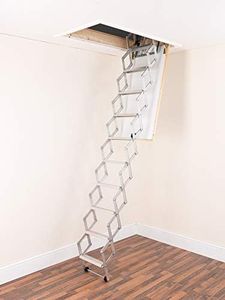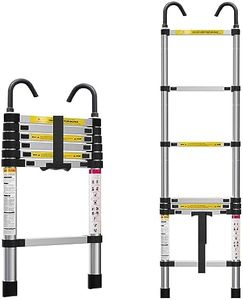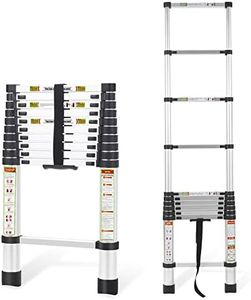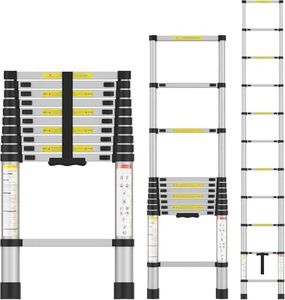We Use CookiesWe use cookies to enhance the security, performance,
functionality and for analytical and promotional activities. By continuing to browse this site you
are agreeing to our privacy policy
10 Best Attic Ladders
From leading brands and best sellers available on the web.Buying Guide for the Best Attic Ladders
Choosing the right attic ladder can make accessing your attic space much safer and more convenient. To find the best fit, you should consider both your attic and your household's needs. Pay attention to measurements, the materials used, and how easy the ladder is to use or install. Be sure to check key specifications carefully, so you get a ladder that is safe, sturdy, and fits your space perfectly.Ceiling HeightCeiling height is the vertical distance from the floor to the ceiling where the ladder will be installed. This measurement is crucial because attic ladders come in various lengths designed to accommodate different ceiling heights. Ladders are typically grouped for standard, tall, and extra-tall ceilings—for example, up to 8 feet, 10 feet, or 12 feet. To choose the right one, measure your ceiling height carefully and select a ladder that matches or slightly exceeds your ceiling height to ensure safe and comfortable use.
Opening SizeOpening size is the length and width of the hole in your ceiling where the ladder will be mounted. This spec is important because the ladder must fit properly into this opening both for safety and ease of installation. Standard attic ladder openings are often around 22.5 x 54 inches, but many homes require different dimensions. Before choosing, measure your attic access carefully and look for ladders designed for your opening size. If you don't have an access opening yet, you may be able to customize it based on the ladder you select.
Weight CapacityWeight capacity refers to the maximum amount of weight the ladder can safely support, including your body weight and any items you carry up with you. Common weight limits range from about 250 to 375 pounds. Higher capacities are better for heavy-duty use, such as carrying storage boxes or tools. To pick the right ladder for you, consider the weight of the heaviest person who will use it and add extra allowance for whatever you typically carry to the attic.
MaterialAttic ladders are usually made from wood, aluminum, or steel. Material matters because it affects the ladder's durability, weight, and resistance to wear or damage. Wooden ladders are sturdy and often quieter but heavier; aluminum ladders are lightweight, easy to handle, and resistant to rust; steel is the most durable but can be quite heavy. If you need a ladder that's easy to extend or move, aluminum may be the best choice. For a more traditional, sturdy feel, wood works well, while steel is ideal for very frequent or heavy use.
Ladder TypeThe ladder type refers to the way the ladder folds or extends. The most common types are folding, telescoping, or sliding. Folding ladders usually have sections that unfold as you pull them down. Telescoping ladders extend down in segments, taking up less space when stowed. Sliding ladders operate on a track. If you have limited attic clearance or don’t want the ladder to take up much space, telescoping styles are a good option. For general use and reliability, folding ladders are most popular.
Ease of Installation and UseThis spec describes how simple it is to install the ladder and how easy it is to operate after installation. Some ladders come with helpful features like handrails, non-slip steps, or easy-opening mechanisms. For anyone who plans to use the attic ladder regularly or for those less comfortable with DIY tasks, look for ladders with clear instructions and user-friendly designs to ensure comfort and safety.
Insulation and AirtightnessInsulation and airtightness are related to how well the attic ladder prevents heat loss and air leaks between your attic and your living space. Some ladders come with insulated doors to help keep your home's temperature stable and save on energy bills. If you live in an area with extreme temperatures or want to keep your home energy-efficient, consider a ladder designed with good insulation and sealing.

